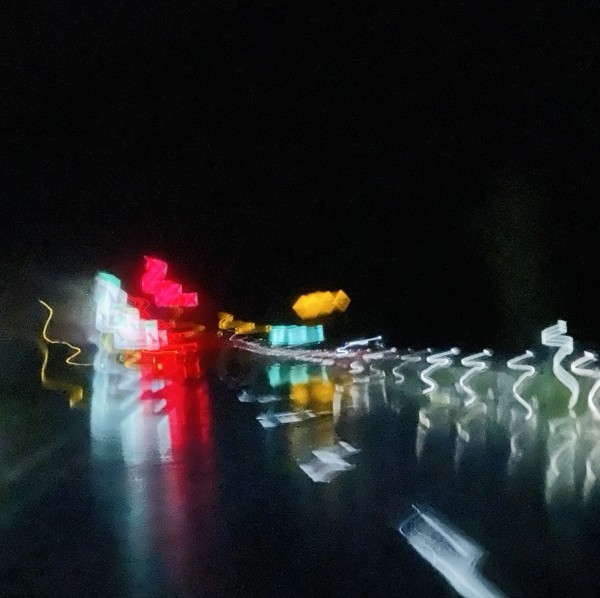02023-04-07 | History, Movies, Music
I was asked how come I had a song on the soundtrack of Groundhog Day. Funny story, that. One evening, we were working in the studio in Santa Barbara, recording The Hours Between Night + Day, when I received a call from the soundtrack division of Epic Records. We need another song for this soundtrack and would like you to record “You Don’t Know Me”, by Ray Charles. I don’t know the song, or the movie, I replied, and what’s in it for me, if I interrupt my work to record this tune for the soundtrack? Well, this is going to be a big movie and we would make sure you get more work on soundtrack albums. Of course we will pick up the studio cost for the duration of this recording, and oh, we would need the song by tomorrow evening.
I turned to Jon. He knew the song and said we could bang that out pretty quickly, if we had to. So we did. We ran after the carrot, like musicians are often made to do. Then the carrot turned a corner and another corner and then it disappeared into some crevice. And that’s how I have a song on the soundtrack album of Groundhog Day. Can’t say the tune does much for me, neither the original nor our version. I think Jon’s bass is great and I do like the electric guitar feedback I added! It was a work for hire, or the promise of hire.
02023-03-01 | Art, Movies
I love, love, love that title:
Moon is the oldest TV…
Amanda Kim’s new documentary Nam June Paik: Moon Is the Oldest TV starts somewhere in the middle. It’s the 1950s, and within the first 20 minutes, we see the artist tranquilly playing a piano composition by Arnold Schoenberg, the Austrian composer who ushered in a new kind of musical modernism. It’s hardly the Paik most people know.
Paik’s wild videos, sculptures, and performances exude a madcap creativity that’s all too rare these days. And so it feels like a relief when, a few minutes later, Paik can be seen slamming his fist against another piano, creating jolting stabs of sound. That’s more like it.
Review: Nam June Paik Sundance Film Explores His Korean Heritage – ARTnews.com
02023-02-26 | Movies
There’s something about Ozu films that I love.
Perhaps it’s the quietness of the plot, where I know nothing is going to jump out at me, make my heart race, or leave me in a soggy puddle on the floor.
His movies are not very long but they take me hours to watch. Why? With most of them, I pause specific scenes just so I can take in everything that’s there. And there’s always a lot to take in.
there’s something about Ozu – un. deux.. trois…
02023-02-24 | Movies
Warren Ellis watched Bullet Train.
Chekhov’s gun is a writing principle that states that everything in a story should be there for a reason. Chekhov’s famous example is that if we’re told a rifle is hanging on the wall in chapter one, then someone needs to fire it in chapter two, otherwise why tell us there’s a rifle there? Chekhov tells us not to waste time with details that aren’t important. Talk about only what is in service to the story, no matter how irrelevant it may seem at the start.
Chekhov’s Water Bottle: BULLET TRAIN (2022) – WARREN ELLIS LTD
I saw Bullet Train a while ago. The actors’ joy was contagious.
02023-01-01 | Book, Movies, Music
Here is the moment where novelist Mohsin Hamid eloquently speaks about the difference between books and movies – from the podcast Always Take Notes. I have compared instrumental music to books and songs to movies, in the past, and love the way Hamid describes books and movies here.
This is from 2014:
What I love about instrumental music is that, without the words, you can find you in it, not just me.
Instrumental Music | Ottmar Liebert
02022-12-13 | Daily Music Tip, Movies, Music
I am listening to it as I am writing this. Sakamoto loves Bach and it shows in this piece.
You might also checkout the album Playing the Piano 12122020. It is lovely. If you are unfamiliar with Sakamoto you will find hat there is lots to discover.
The Monocle Minute | Monocle:
Over the past couple of days, Ryuichi Sakamoto (pictured), one of Japan’s greatest contemporary musicians, has made a pre-recorded solo piano “concert” available to stream in what might be one of his last public appearances. Sakamoto, who is being treated for stage-4 cancer, has had a remarkable career that spans 1970s synth pop and film scores, and he occupies a unique space in Japan’s cultural landscape.
and
“I hope to be able to make music until my last moment, like Bach and Debussy, whom I love,” he recently wrote.
What a legend.
Take a look at the wonderful documentary Coda from 2017. You can watch the trailer here. I bought the DVD and watched it several times.
And so much music for films: Merry Christmas Mr. Lawrence was the first one I experienced. Sakamoto was asked to act in the movie and promptly told the director he would only act IF he also got to do the music. Nice! Then came Bertolucci’s The Last Emperor. Again, he was engaged as an actor. After composing a few pieces for the movie, during the filming, he eventually scored most of the movie. Then there are Almodovar’s High Heels, The Revenant, and so many more – IMDB lists over a hundred.
Found this video of a performance by Sakamoto and Alvo Nota in the Glass House, the famous building by Philip Johnson, located in New Canaan, Connecticut.


